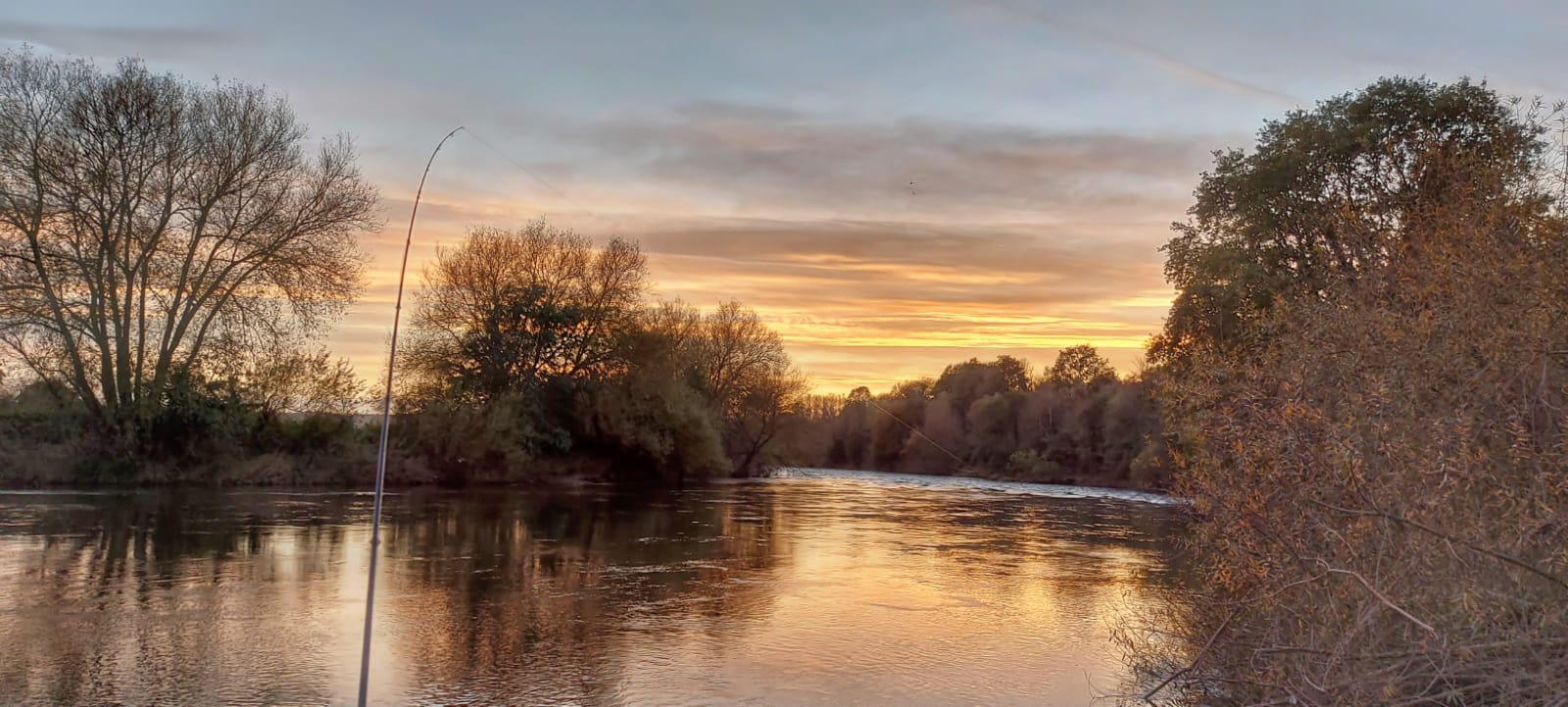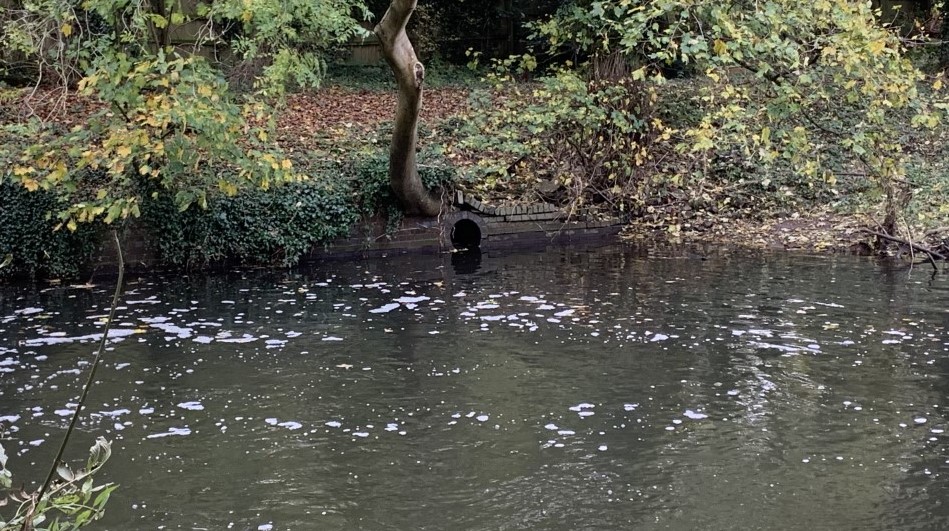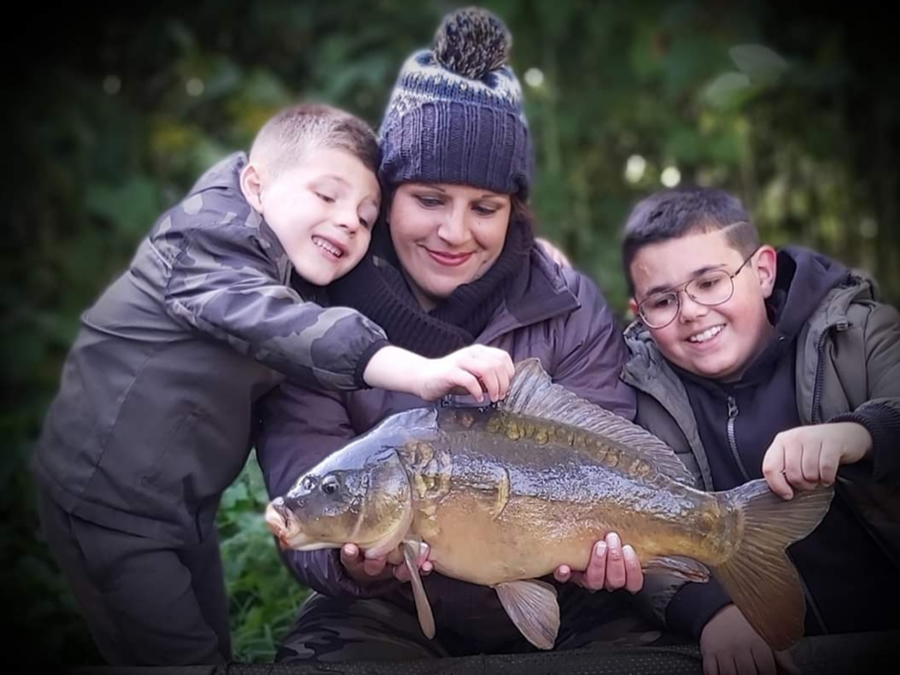
Water Quality Monitoring Network – Rivers
The Angling Trust Water Quality Monitoring Network was launched in May 2022 as part of our Anglers Against Pollution campaign to engage anglers and angling clubs in better understanding pollution issues on their waters.
The initial pilot project focused on the River Severn catchment and was rolled out nationally just two months later. It now has the support of over 200 clubs.
The findings from water quality tests taken by club volunteers will help the Angling Trust hold the government to account, ensuring it lives up to its rhetoric on improving our environment and meeting its own legal responsibilities, and support local initiatives to restore our rivers to a healthy state.
The initiative is supported financially by Orvis UK. If your club would like to get involved, please email aap@anglingtrust.net
This brief outline of the Water Quality Monitoring Network (WQMN) explains the rationale behind its launch, what’s included in testing, and how the data will be used:
CLICK HERE FOR MORE INFORMATION

WQMN Annual Report 2022-23
The Angling Trust has published the first annual Water Quality Monitoring Network report. The comprehensive report not only highlights the tremendous efforts of volunteer citizen scientist anglers but also sheds further light on the state of our rivers and the urgent need for action. Read it online here – you can also download a PDF copy, search the content, and share on social media.
Volunteer Resources
All volunteers who sign up to the WQMN through their angling club receive a Joining Email with all the information they need to undertake their water quality monitoring. These include:
Volunteer Pack:
The Volunteer Pack includes all the instructions on how to undertake a water quality sample and how to record the results in Epicollect.
Angling Trust Code of Practice for Staff, Officials and Volunteers:
All WQMN volunteers need to adhere to the Angling Trust code of practice.
CLICK HERE FOR CODE OF PRACTICE
Risk Register:
Volunteers are asked to undertake a risk assessment before their first sampling session and to send it to aap@anglingtrust.net
CLICK HERE FOR BLANK RISK REGISTER
CLICK HERE FOR EXAMPLE RISK REGISTER
Manual Record Sheet:
This manual record sheet is a backup for volunteers in case the Epicollect app isn’t working.
CLICK HERE FOR MANUAL RECORD SHEET
Viewers Pack:
Clubs and other organisations can nominate Viewers who can access the WQMN dataset. This pack provides instructions on how to access the WQMN data in Epicollect.
Interpreting Your Results:
This short guide shows how to interpret your WQMN results and includes the Water Framework Directive standards.
CLICK HERE FOR INTERPRETING YOUR RESULTS
How To… Videos:
All of the How To… videos produced by Cardiff University are available on YouTube.
Re-ordering of WQMN consumables:
We have set up a special form for the re-ordering of consumables for your water quality testing kits.
CLICK HERE TO RE-ORDER CONSUMABLES FOR WQMN KITS
Volunteer Zoom Meetings:
Regular Zoom Meetings help to keep volunteers up to speed with developments in the WQMN and are an opportunity to ask questions and share best practice.
CLICK HERE FOR RECORDING FROM APRIL 2024 ZOOM MEETING
CLICK HERE FOR RECORDING FROM JANUARY 2024 ZOOM MEETING
CLICK HERE FOR RECORDING FROM OCTOBER 2023 ZOOM MEETING
CLICK HERE FOR RECORDING FROM JUNE 2023 ZOOM MEETING
CLICK HERE FOR RECORDING FROM FEBRUARY 2023 ZOOM MEETING
CLICK HERE FOR RECORDING FROM NOVEMBER 2022 ZOOM MEETING
Volunteer Guides
The Water Quality Monitoring Network’s aim is to engage anglers in better understanding the state of their waters and to empower angling clubs to address the pollution blighting their waters. The WQMN monitoring kits have fulfilled the initial aim of engaging anglers in better understanding the state of their waters and in many cases have highlighted serious pollution issues. The data collected provides a solid evidence base that will empower angling clubs, and others, to address the pollution blighting their waters. The Campaigning Guide and Funding Guide provide a wealth of useful information designed to support clubs in undertaking local campaigns and raising additional funds to support those campaigns, expand monitoring activity or undertaking practical habitat projects.
Campaigning Guide
Having recognised that their waters are polluted, what can anglers and angling clubs do to address the pollution and its sources? In some cases, it might be possible to undertake practical habitat work that reduces or intercepts pollution before it enters our waterways; or in-stream habitat enhancements that can help to mitigate the effects of pollution.
However, in many cases the causes of poor water quality and sources of pollution will be outside the control or remit of angling clubs and therefore angling clubs will need to undertake local campaigns to highlight the issues and to demand action from government, regulators and polluters.
This short guide is designed to help angling clubs successfully campaign for better water quality and to challenge the pollution crisis.
Funding Guide
Where pollution has been identified, in some cases it might be possible to undertake practical habitat work that reduces or intercepts pollution before it enters our waterways; or in-stream habitat enhancements that can help to mitigate the effects of pollution. But these kinds of practical habitat work often require funding.
This short guide is designed to help angling clubs to raise the funds necessary to undertake practical habitat enhancements.
Other Useful Resources
Phosphorous Information Sheet
Prepared by Cardiff University on behalf of the Wye Catchment Collaborative Monitoring Network, this short guide for citizen scientist explains the different forms of phosphorous and how they relate to water quality monitoring.
CLICK HERE FOR PHOSPHOROUS INFORMATION SHEET
Algal Blooms
We ask volunteers to record observations of Algal Blooms because they can be harmful to fish, wildlife and humans and are linked to poor water quality, in particular eutrophication (phosphate and nitrate nutrient enrichment).
Algae occur naturally in inland waters such as rivers, streams and lakes. When conditions are ideal for growth, an algal bloom can occur. During a bloom, the water becomes less clear and may look green, blue-green or greenish-brown, brown or even black. Scums can form during calm weather when several bloom forming species rise to the surface. This can look like paint, mousse or small clumps.
Cyanobacteria or ‘blue-green algae’, a type of blooming algae, can produce toxins. These toxins can kill invertebrates, fish, wild animals, livestock and pets. They can also harm people, producing rashes after skin contact and illnesses if swallowed. Algal blooms block sunlight from reaching other plants in the water. They also use up oxygen in the water at night which can suffocate fish and other creatures. Oxygen is also used up when the bloom decays.
If volunteers witness an algal bloom, they should record it on Epicollect and report it to the Environment Incident Hotline. Telephone (24 hour service) 0800 80 70 60
Algal blooms: advice for the public and landowners
Foam in Rivers
Foam in rivers is often assumed to be a sign of pollution, but foam is also a natural phenomenon. Thick, whitish brown foam is caused by organic matter decaying and being broken down in the water. As it breaks down it dissolves into a compound known as Dissolved Organic Carbon (DOC). This type of foam is more common in peat rich areas, lake edges, and faster flowing water. Natural river foam will smell earthy or slightly fishy.
Foam that is bubbly and bright white or iridescent is usually man made and you’re likely to notice it fairly close to the source. Foam from pollutants will smell perfumed or soapy.
Concerns about pollution associated with unnatural foam should be reported to the Environment Agency or Natural Resources Wales.
Download the Environment Agency leaflet on Foam in Rivers and Still Waters
Sewage Fungus
Sewage Fungus is a mass of filamentous bacteria that grows in response to organic nutrients in water. Whereas algal blooms are suspended in the water column Sewage Fungus builds up on almost any surface where there is a flow of water and the necessary nutrients. Sewage Fungus has been frequently used as a bioindicator of organic river pollution. Its presence has been strongly associated with discharges of untreated or inadequately treated sewage, yet its presence extends beyond these areas, with contributors including airport de-icers, industrial effluents, and agricultural runoff.
In addition to being a bioindicator of organic pollution in rivers and playing a vital role utilising excess organic carbon in it, Sewage Fungus causes significant ecological impacts through direct and indirect ecological pathways. Sewage Fungus thrives in the low dissolved oxygen (DO) environment of an organically polluted river. Whilst DO is required for Sewage Fungus growth, it readily out competes other benthic organisms at low DO, quickly smothering riverbeds, greatly altering the benthic habitat for invertebrates and fish spawning. The dominating growth of Sewage Fungus also reduces hyporheic exchange flows, an important part of a rivers self-cleaning system. Similar river biofilms are also reported to accumulate heavy metals and other toxic substances within their matrix causing ecological impacts throughout the food web. Sewage Fungus uses considerably higher DO than an aquatic macrophyte of the same mass and it can maintain DO concentrations below thresholds required for other organisms. Once Sewage Fungus becomes established, it is difficult to remove, unless all sources of organic nutrients (pollution) are addressed, causing a further loss in biodiversity and other flora and fauna in the river. These ecological impacts and the striking visible presence of sewage fungus growth on a riverbed further affects people’s perceptions and use of rivers.
Alongside the complex nutrient utilisation requirements of Sewage Fungus, there are several key environmental drivers including substrate type, flow velocity, temperature, shading/sunlight, and water chemistry (e.g. pH). Flowing water is a requirement for Sewage Fungus growth, to provide a constant replenishment of nutrients. However, if the velocity of the river is too fast, then growths are scoured away, especially on more readily mobilised substrates. The substrate affects the upper limit of flow as more stable riverbeds are less readily mobilised in periods of higher flows. Surfaces such as large cobbles, anthropogenic litter (e.g., bricks), and concrete channels facilitate excellent Sewage Fungus growth, whereas fine sediments and gravel provide a less stable substrate.
Sewage Fungus: A Field and Microscopic Guide
Agricultural Pollution
Whilst sewage pollution has received a lot of attention, and rightly so, it is important to recognise that agriculture is the largest contributor to poor water quality on our waterways.
Farmers should be adhering to the Farming Rules for Water in order to minimise the impact of diffuse pollution – The Reduction and Prevention of Agricultural Diffuse Pollution (England) Regulations 2018 (legislation.gov.uk)
A summary of the rules are laid out by the EA in this policy paper – Farming rules to protect watercourses – policy paper (publishing.service.gov.uk)
It is the Environment Agency’s responsibility to ensure compliance and address non-compliance to the Farming Rules for Water and if you suspect that a farmer is not compliant you should report your concerns to the Environment Incident Hotline. Telephone (24-hour service) 0800 80 70 60 – Report an environmental incident – GOV.UK (www.gov.uk). The EA and many local Rivers Trusts have teams of farm advisors who can support farmers with the implementation of the Farming Rules for Water.
Further Information
If you want to know more about the Water Quality Monitoring Network contact aap@anglingtrust.net
News items you may be interested in

OFWAT 20 years of regulatory failure

MPs support Angling Trust’s call for…

Government’s response to water quality report…

Anglers to check rivers as Angling…

Lack of action on agricultural pollution…

Angling Trust urges West Berkshire Council…

Angling Direct adds support to the…

March for Clean Water – join…

Angling Trust welcomes largest review of…

Angling Trust responds to new government’s…

Angling Trust’s response to Water Industry…

Angling Trust urges government to go…

Huge increase in fish kills linked…

New bathing water sites: statement from…

Anglers Against Pollution On Tour: Join…

Angling Trust join sports alliance in…

Angling Trust and Action for the…

Angling Trust statement on the government’s…

The River Wye Action Plan: A…

Kennet Catchment River Keepers Lead Anglers…

Angling Trust criticises the government’s new…

Angling, community and conservation groups rally…

National Overflows Plan shines light on…

Urgent answers sought from DEFRA and…

Water quality annual report sparks surge…

Angling Trust calls on political parties…

Raw sewage in rivers: Angling Trust…

BBC Panorama exposes cheating on pollution…

Landmark victory for Fish Legal! High…

Volunteers of iconic Hampshire chalk streams…

Financial risk of four water companies…

Angling Trust welcome U-turn on housebuilding…

Angling Trust banging the drum against…

Jamie Cook responds to Barbel Society…

Government defeated on plans to relax…

Sewage law-breaking needs to ‘mark beginning…

Government grants house builders a charter…

Anglers’ anger as government delays crucial…

Angling Trust presents special awards to…

River Severn pollution report makes grim…

Have your say: tell the government…

Angling Trust Demand Government Action on…

Anglers Against Pollution milestone as 2,000th…

Fish kills: Let’s be clear –…

Government Plan for Water will fall…

Sewage spills continue to blight our…

OFWAT’s threat to prevent water company…

Second River Ray pollution in 6…

Nothing new in government announcement on…

Have Your Voice Heard: How Should…

Environment Secretary challenged to deliver more…

Sewage pollution cover up – Angling…

Upper Medway angling clubs challenge Environment…

Progressive angling club joins the Water…

River campaigner Tony joins the Angling…

Angling Trust’s call for water companies’…

Water Quality Monitoring Network inspires local…

Waterways and wildlife under threat as…

Labour’s shadow environment minister visits the…

Government fails to act on sewage…

Anglers Against Pollution monitoring campaign growing…

Action demanded over River Ray pollution

Water Quality Monitoring Network results force…

OFWAT 20 years of regulatory failure

MPs support Angling Trust’s call for…

Government’s response to water quality report…

Anglers to check rivers as Angling…

Lack of action on agricultural pollution…

Angling Trust urges West Berkshire Council…

Angling Direct adds support to the…

March for Clean Water – join…

Angling Trust welcomes largest review of…









